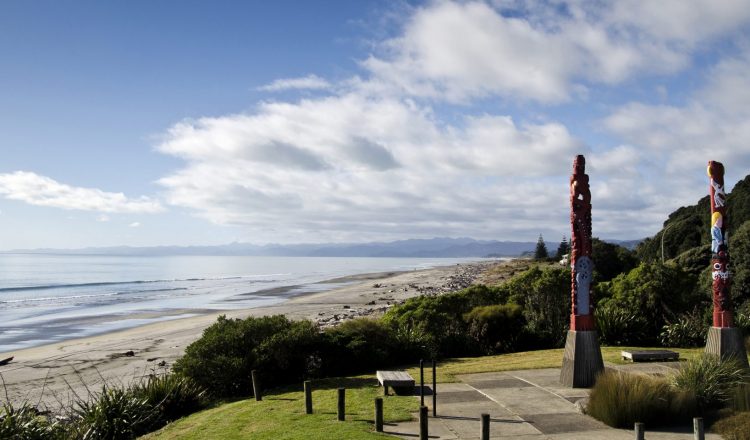오포티키 (Opōpōtiki) 는 뉴질랜드 북섬의 베이오브플렌티 동부에 있는 작은 마을입니다.와이오타헤 해변 위의 동쪽 절벽에 ‘오포티키 마이타휘티’라고 불리는 봄의 이름을 따서 명명되었습니다.봄은 Tarawa와 치프 (Tarawa) 와 그의 형제가 Te Srautauta라는 카누에서 뉴질랜드를 항해했으며, 두 마리의 타나하나하 물고기 애완 동물과 함께 “멀리서 두 마리의 애완 동물”을 의미하는 O-Potiki-mai 타휘티로 알고 있습니다.그는 이 물고기를 올 봄에 넣었습니다.
오포티키 (Opotiki) 에서 가장 초기에 기록된 주민들은 12세기 토이 정착 시대부터 솟아난 티니오토이와 티니오아와 부족이었다.
유럽인들 이전에는 오포티키는 큰 마을이었고 인기있는 마오리 중심지였습니다.그러나 1769년, 제임스 쿡 선장이 베이오브플렌티 해안을 지나갔을 때 현지 마오리족이 유럽인들과 처음 접촉했습니다.이 때문에 많은 유럽과 미국의 거래자들이이 지역을 방문하기 시작했습니다.
1820년대에는 노스랜드 출신 Ngapuhi 군대의 무장 침략이 오랫동안 있었습니다.오포티키 (Opotiki) 는 많은 고급 무기를 가지고 있지 않았기 때문에 해안에서 거친 숲이 우거진 내부로 퇴각해야했습니다.
1830년대와 1840년대에는 더 평화로운 시대가 있었으며, 이 시기에 부족들은 해안으로 보수를 시작할 수 있었고 그곳에서 발견된 모든 거래 기회를 최대한 활용할 수 있었습니다.이번에 마오리 기독교 선교사들은 오포티키에 도착하기 시작했습니다.그런 다음 1840 년 와이탕기 조약이 체결되어 영국의 주권을 확립했습니다.프랑스 선교사들은 현재 오포티키 (Opotiki) 라고 알려진 Pa Kowhai 지역에서 이사하기 시작했습니다.
1850년대와 1860년대 초반에는 더 많은 발전이 있었고 마오리족은 밀, 돼지, 복숭아와 같은 유럽의 농업 방법과 작물을 채택하기 시작했습니다.그들은 오클랜드와 거래했습니다.
1963년 와이카토 침공이 일어났습니다.19세기 뉴질랜드 전쟁에서 가장 큰 사건이었습니다.그것은 식민지 정부의 군대와 Kingitanga 운동으로 알려진 마오리 부족의 연맹 사이에 있었다.그것은 9 개월 동안 지속되었고 영국 당국에 위협이되는 Kingit 권력을 무너 뜨리는 일이 일어났습니다.그 결과 화카토헤아 (Whakatōhea) 는 반영국군에 대한 지원을 빌려 1865년 영국군에 의해 오포티키 (Opotiki) 를 탄생시켰다.
결국 복숭아가 지구에 왔지만, 대부분의 땅은 영국 정착민들에 의해 채취되어 양과 가축 농업 지역으로 만들어졌습니다.재배 가능한 배후지의 작은 지역과 항구 입구가 위험했기 때문에 Opotiki 마을이 베이 오브 플렌티 (Bay of PlentY) 의 주요 중심지가되기위한 희망이 빠르게 부서졌습니다.
1950 년대와 60 년대에는 주요 홍수가 발생하여 마을에 제방 은행이 도입되어 홍수로 인한 피해를 성공적으로 막았습니다.20 세기 후반에 키위 붐이 있었는데, 이 지역의 후손은 큰 후손이라고 할 수 있습니다.이제 홍합 농업은 관광객을 데려 오는 모투 트레일에서 자전거를 타는 것뿐만 아니라 마을 개발을 돕는 다음 큰 프로젝트입니다.

















































